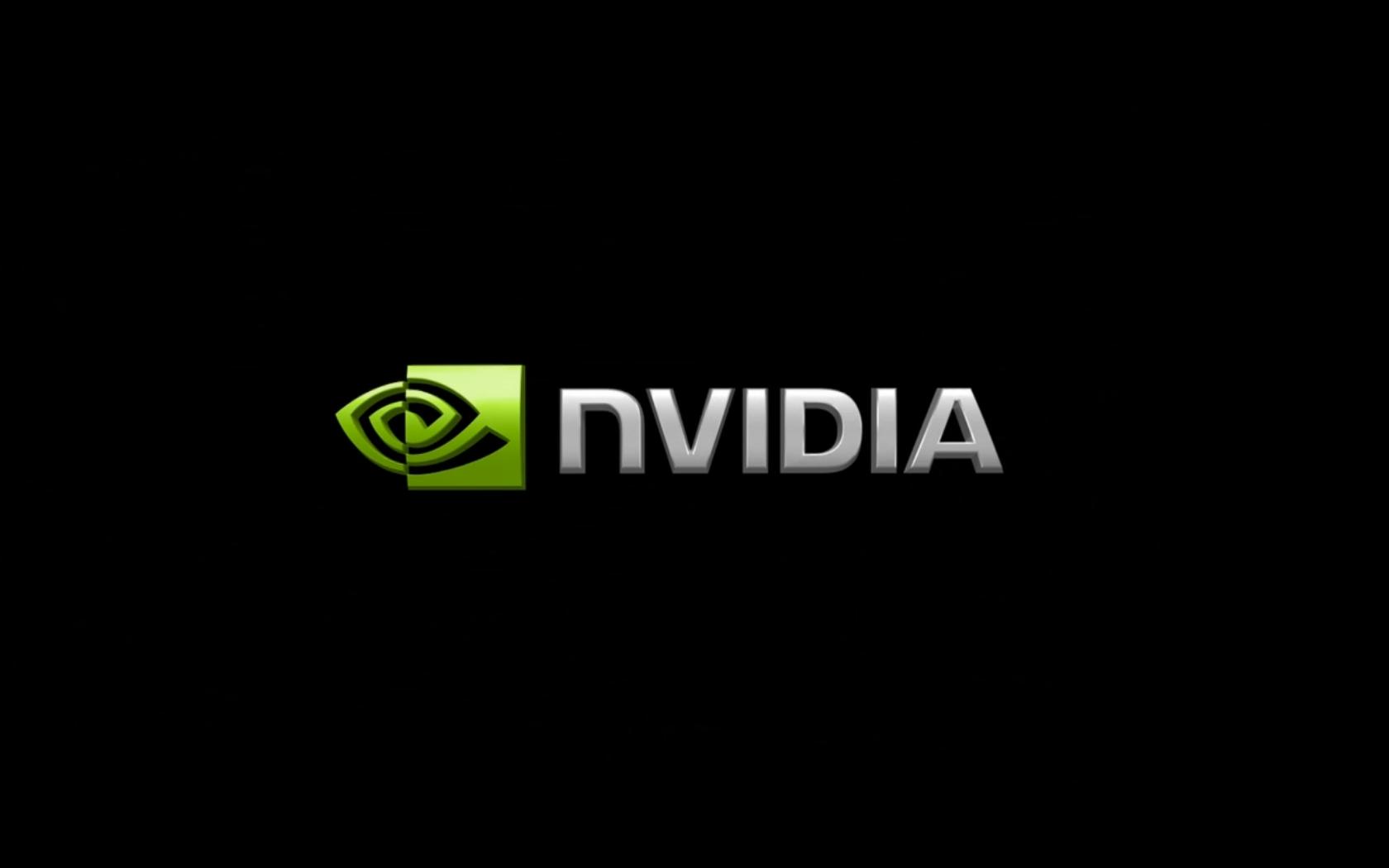AIDA64 Benchmark
AIDA64 Extreme Edition is a diagnostic and benchmarking software suite for home users that provides a wide range of features to assist in overclocking, hardware error diagnosis, stress testing, and sensor monitoring. It has unique capabilities to assess the performance of the processor, system memory, and disk drives.
The benchmarks used in this review are the memory bandwidth and latency benchmarks. Memory bandwidth benchmarks (Memory Read, Memory Write, Memory Copy) measure the maximum achievable memory data transfer bandwidth. The code behind these benchmark methods are written in Assembly and they are extremely optimized for every popular AMD, Intel and VIA processor core variants by utilizing the appropriate x86/x64, x87, MMX, MMX+, 3DNow!, SSE, SSE2, SSE4.1, AVX, and AVX2 instruction set extension.
The Memory Latency benchmark measures the typical delay when the CPU reads data from system memory. Memory latency time means the penalty measured from the issuing of the read command until the data arrives to the integer registers of the CPU.

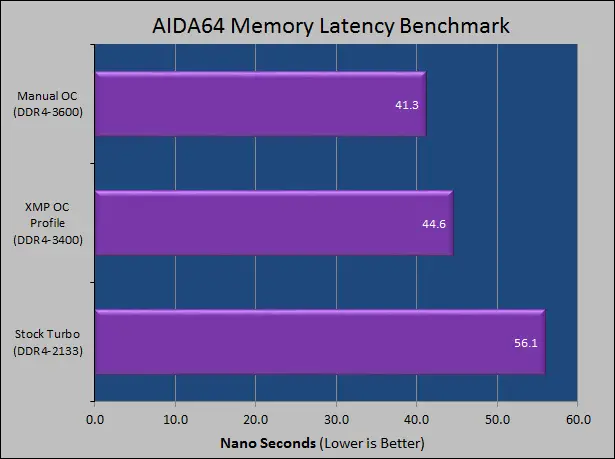
SuperPI Benchmark
SuperPi calculates the number of digits of PI in a pure 2D benchmark. For the purposes of this review, calculation to 32 million places will be used. RAM speed, RAM timings, CPU speed, L2 cache, and Operating System tweaks all effect the speed of the calculation, and this has been one of the most popular benchmarks among enthusiasts for several years.
SuperPi was originally written by Yasumasa Kanada in 1995 and was updated later by snq to support millisecond timing, cheat protection and checksum. The version used in these benchmarks, 1.5 is the official version supported by hwbot.

As you can see this factory overclocked RAM kit is darn impressive. By simply enabling the XMP profile consumers can get much greater performance from their system. That us makes the extra expense well worth it.
FAHBench 1.2.0
With Folding@home becoming more popular, and since folding performance is a fairly memory intensive endeavor this makes it a great option for showing how performance is impacted by RAM performance. The official FAHBench includes numerous options but we have opted to use the OpenCL CPU option and test first with implicit modeling and then explicit.
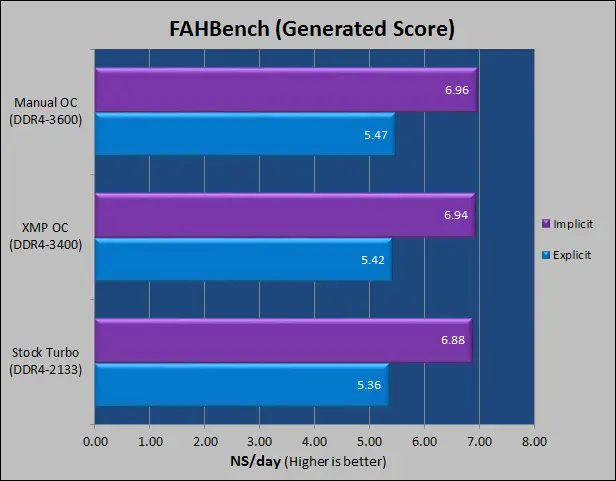
WinRAR x64
WinRAR is by far one of the most popular compression and archival utilities commercially available today. As it memory intensive it is also extremely useful in evaluating the overall performance of the RAM sample. For repeatability we have opted for the built-in benchmark processing 1,000MB of data.
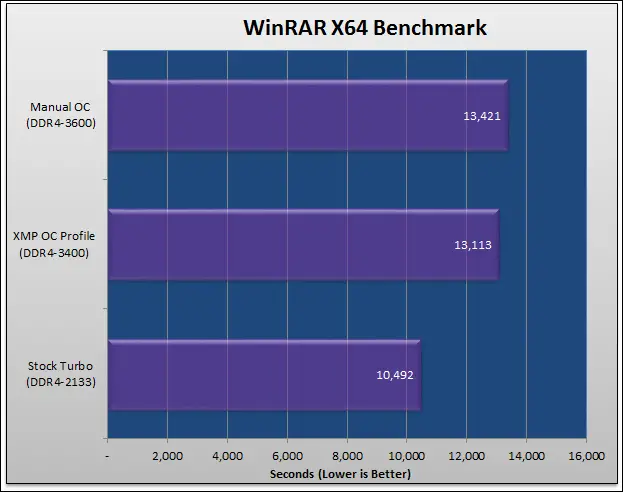
CineBench R15
CINEBENCH is a real-world cross platform test suite that evaluates your computer’s performance capabilities. CINEBENCH is based on MAXON’s award-winning animation software CINEMA 4D, which is used extensively by studios and production houses worldwide for 3D content creation.
In this system benchmark section, we will use the x64 Main Processor Performance (CPU) test scenario. The Main Processor Performance (CPU) test scenario uses all of the system’s processing power to render a photorealistic 3D scene (from the viral “No Keyframes” animation by AixSponza). This scene makes use of various algorithms to stress all available processor cores. The test scene contains approximately 2,000 objects which in turn contain more than 300,000 polygons in total, and uses sharp and blurred reflections, area lights, shadows, procedural shaders, antialiasing, and much more. The result is displayed in points (pts). The higher the number, the faster your processor.
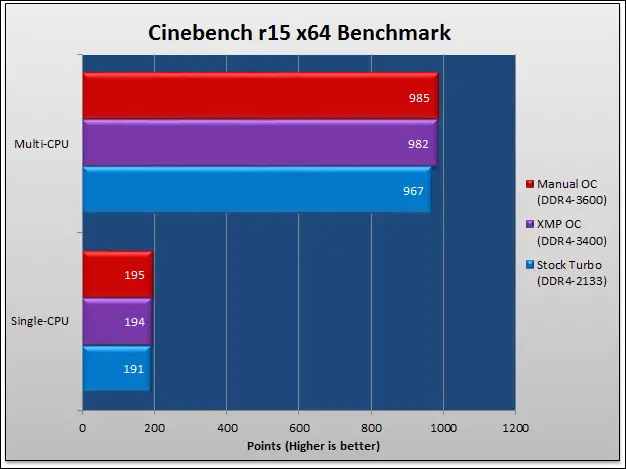 Once again this kit is darn fast with its XMP profile enabled. So much so that some consumers may not even want to take the time to upgrade it to DDR4-3600 speeds. When you think about it, that is very impressive and just highlights how fast this Trident Z kit really is. Brilliant stuff!
Once again this kit is darn fast with its XMP profile enabled. So much so that some consumers may not even want to take the time to upgrade it to DDR4-3600 speeds. When you think about it, that is very impressive and just highlights how fast this Trident Z kit really is. Brilliant stuff!



